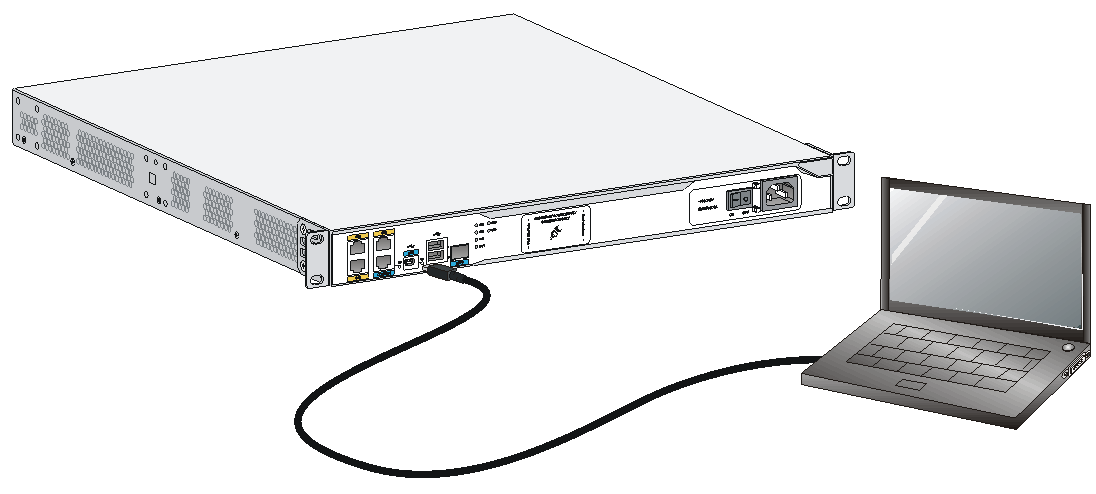- Table of Contents
- Related Documents
-
| Title | Size | Download |
|---|---|---|
| 03-MSR Routers Software Upgrade from BootWare Configuration Examples | 192.95 KB |
MSR Routers
Software Upgrade from BootWare
Configuration Examples
Copyright © 2024 New H3C Technologies Co., Ltd. All rights reserved.
No part of this manual may be reproduced or transmitted in any form or by any means without prior written consent of New H3C Technologies Co., Ltd.
Except for the trademarks of New H3C Technologies Co., Ltd., any trademarks that may be mentioned in this document are the property of their respective owners.
The information in this document is subject to change without notice.
Contents
Introduction
The following information provides an example for configuring software upgrade through the BootWare menu.
Prerequisites
This document is not restricted to specific software or hardware versions. Procedures and information in the examples might be slightly different depending on the software or hardware version of the device.
The configuration examples were created and verified in a lab environment, and all the devices were started with the factory default configuration. When you are working on a live network, make sure you understand the potential impact of every command on your network.
The following information is provided based on the assumption that you have basic knowledge of software upgrade.
Configuration examples
Network configuration
As shown in Figure 1, the PC is connected to the device through the console cable and the network port on the PC is connected to the management port of the device. Perform software upgrade for the device through the BootWare menu.
Analysis
Upload the software upgrade version via TFTP, and then perform the upgrade by using the extended BootWare segment.
Prerequisites
Download the required software version for the device from the H3C official website and save it to the local PC.
Procedures
1. Run the TFTP Server program on the PC and specify the file path for program downloading.
2. Run the terminal emulator program on the PC and log in to the device through the console port. Then, execute the reboot command to reboot the device. When Press Ctrl+B to access EXTENDED-BOOTWARE MENU... appears, press Ctrl+B to the EXTENDED-BOOTWARE menu. The device enters the main EXTENDED-BOOTWARE menu during the startup. When the system prompts Enter your choice(0-9):, enter 3 to access the Ethernet submenu.
==========================<Enter Ethernet SubMenu>==========================
|Note:the operating device is sda0 |
|<1> Download Image Program To SDRAM And Run |
|<2> Update Main Image File |
|<3> Update Backup Image File |
|<4> Download Files(*.*) |
|<5> Modify Ethernet Parameter |
|<0> Exit To Main Menu |
|<Ensure The Parameter Be Modified Before Downloading!> |
============================================================================
Enter your choice(0-5):
3. In the Ethernet submenu, enter 5 to configure Ethernet port parameters.
|
|
NOTE: You can enter the new parameters directly. If you do not specify any parameters and directly press Enter, the original parameters will be retained without any modifications. |
The terminal display is as follows:
======================<ETHERNET PARAMETER SET>==============================
|Note: '.' = Clear field. |
| '-' = Go to previous field. |
| Ctrl+D = Quit. |
============================================================================
Protocol (FTP or TFTP):tftp
Load File Name :main.ipe
Target File Name :main.ipe
Server IP Address :192.168.0.2
Local IP Address :192.168.0.1
Subnet Mask :255.255.255.0
Gateway IP Address :0.0.0.0
Table 1 Setting Ethernet port parameters
|
Field |
Description |
|
'.' = Clear field |
Press the dot (.) to clear the setting for a field. |
|
'-' = Go to previous field |
Press the hyphen (-) to return to the previous field. |
|
Ctrl+D = Quit |
Press Ctrl+D to exit the Ethernet parameter settings menu. |
|
Protocol (FTP or TFTP) |
Set the file transfer protocol to FTP or TFTP. |
|
Load File Name |
Set the name of the file to be downloaded. |
|
Target File Name |
Set a file name for saving the file in the current storage medium on the device. By default, the suffix of the target file name is the same as the source file name. |
|
Server IP Address |
Set the IP address of the FTP or TFTP server. |
|
Local IP Address |
Set the IP address of the device. |
|
Subnet Mask |
Set the IP address mask. |
|
Gateway IP Address |
Set a gateway IP address if the device is on a different network than the server. |
4. After TFTP protocol parameters are configured, the system returns to the Ethernet submenu.
==========================<Enter Ethernet SubMenu>==========================
|Note:the operating device is sda0 |
|<1> Download Image Program To SDRAM And Run |
|<2> Update Main Image File |
|<3> Update Backup Image File |
|<4> Download Files(*.*) |
|<5> Modify Ethernet Parameter |
|<0> Exit To Main Menu |
|<Ensure The Parameter Be Modified Before Downloading!> |
============================================================================
Enter your choice(0-5):
5. Enter 2 or 3 in the Ethernet submenu based on the type of the startup configuration file to select the main or backup startup configuration file for the upgrade. This example selects the main startup configuration file. In the Ethernet submenu, enter 2.
Loading.....................................................................
............................................................................
.........................Done!
94786560 bytes downloaded!
Image file main-cmw710-boot-XXX.bin is self-decompressing...
Saving file sda0:/main-cmw710-boot-XXX.bin ......Done.
Image file main-cmw710-system-XXX.bin is self-decompressing...
Saving file sda0:/main-cmw710-system-XXX.bin .......................
............................................................................
..................Done. .
==========================<Enter Ethernet SubMenu>==========================
|Note:the operating device is sda0 |
|<1> Download Image Program To SDRAM And Run |
|<2> Update Main Image File |
|<3> Update Backup Image File |
|<4> Download Files(*.*) |
|<5> Modify Ethernet Parameter |
|<0> Exit To Main Menu |
|<Ensure The Parameter Be Modified Before Downloading!> |
============================================================================
Enter your choice(0-5):
6. After the upgrade, enter 0 in the Ethernet submenu to return to the main EXTENDED-BOOTWARE menu. Then, enter 1 to continue the device bootup.
Verifying the configuration
# Execute the display version command to display the current software version of the device.


